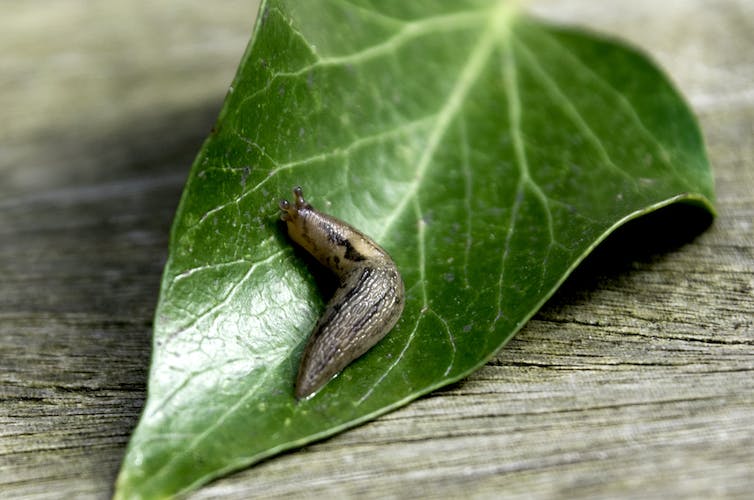
Curious Kids is a series for children of all ages. If you have a question you’d like an expert to answer, send it to [email protected].
Why are snails and slugs so slow? – Sarah, age 11, Wichita Falls, Texas
Wander through your backyard or walk along a stream and it’s likely you’ll see a snail – small, squishy animals with shells on their backs.
Snails are found in water, whether in salty oceans, rivers or lakes. They’re also on land: in forests, grasslands and even your garden.

A garden slug – slimy, slippery and without a shell.
Busybee-CR/Moment via Getty Images
As you explore your yard or woods, you can also encounter slugs, which are slow-moving animals related to snails. They look like them too, except that slugs lack shells.
Not only can you find slugs crossing sidewalks or on plants at the park – some are in our oceans.
All told, an estimated 240,000 species of snails and slugs live all over the world. But no matter what continent they’re on, or what ocean they’re in, there’s one thing they all have in common: They move slowly.
Here’s an example of just how slow they are: The World Snail Racing Championships, held in the United Kingdom, pits the quickest snails against one another in a “foot” race.
The fastest snail on record sped through the course at a blazing 0.06 miles per hour.
Or to look at it another way – if you were that slow, it would take about three minutes to get a bite of food from your plate to your mouth.
See a snail find its way home.
Mollusks are everywhere
Why is it that snails and slugs are in no hurry?
As researchers who specialize in the study of plants and animals, we’ve learned the answer is more complicated than you might think.
Snails and slugs are members of a large group of related animals known as mollusks, which also includes clams, oysters, squids and octopuses.
Within mollusks, there’s a smaller set of related animals called gastropods; this includes snails and slugs.
Because they live in such diverse places, different gastropods have evolved to consume almost every type of food. Some species are herbivores – they eat living plants. Some are detritivores – they feed on dead or decomposing plants. Others are carnivores or scavengers – they eat other animals.
The reasons for slowness
The lack of speed of snails and slugs can be attributed to at least three factors: how they move, what they eat and what eats them.
First, while some animals fly, jump or slither, snails and slugs move using what biologists call the “ventral foot.” But the word “foot” here can be confusing. A snail or slug foot is nothing like a human foot.
Instead, it’s a band of muscle that runs along the underside of their body and is covered in sticky mucus. When contracted, this muscle…



